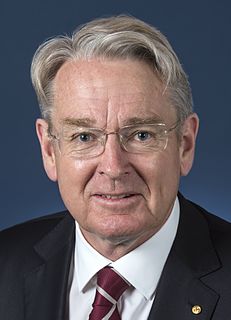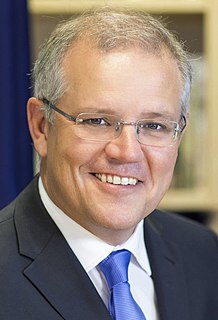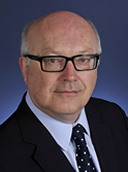Elections were held on 21 November 1970 to elect 32 of the 60 seats in the Australian Senate. This is the most recent occasion on which a Senate election was held with no accompanying election to the House of Representatives; the two election cycles had been out of synchronisation since 1963. The governing Coalition and the opposition Australian Labor Party won 13 and 14 seats respectively, resulting in a total of 26 seats each, while the Democratic Labor Party and three independents (two newly elected) held the remaining seats.

The Senate is the upper house of the bicameral Parliament of Australia, the lower house being the House of Representatives. The composition and powers of the Senate are established in Chapter I of the Constitution of Australia. There are a total of 76 Senators: 12 are elected from each of the six states regardless of population and 2 from each of the two autonomous internal territories. Senators are popularly elected under the single transferable vote system of proportional representation.

The House of Representatives is the lower house of the bicameral Parliament of Australia, the upper house being the Senate. Its composition and powers are established in Chapter I of the Constitution of Australia.
The Coalition is an alliance of centre-right political parties that forms one of the two major groupings in Australian federal politics. Its main opponent is the Australian Labor Party (ALP), and the two forces are often regarded as operating in a two-party system. The Coalition has been in government since the 2013 federal election. The party is currently led by Scott Morrison as Prime Minister of Australia since August 2018.
Contents
| Party | Votes | % | Swing | Seats Won | Seats Held | Change | ||
|---|---|---|---|---|---|---|---|---|
| Labor | 2,376,215 | 42.22 | –2.81 | 14 | 26 | –1 | ||
| Liberal–Country coalition (total) | 2,149,023 | 38.18 | –4.59 | 13 | 26 | –2 | ||
| Liberal–Country joint ticket | 1,098,134 | 19.51 | –14.31 | 4 | * | * | ||
| Liberal | 991,473 | 17.61 | +9.47 | 8 | 21 | 0 | ||
| Country | 59,416 | 1.06 | +0.24 | 1 | 5 | –2 | ||
| Democratic Labor | 625,142 | 11.11 | +1.34 | 3 | 5 | +1 | ||
| Australia | 163,343 | 2.90 | +2.90 | 0 | 0 | 0 | ||
| Pensioner Power | 28,983 | 0.51 | +0.51 | 0 | 0 | 0 | ||
| Defence of Government Schools | 27,796 | 0.49 | +0.49 | 0 | 0 | 0 | ||
| National Socialist | 24,017 | 0.43 | +0.43 | 0 | 0 | 0 | ||
| Independent / Other | 234,314 | 4.16 | +2.46 | 2 | 3 | +2 | ||
| Total | 5,628,833 | 32 | 60 | |||||
- Notes
- In New South Wales and Queensland, the coalition parties ran a joint ticket. Of the four senators elected on a joint ticket, three were members of the Liberal Party and one was a member of the Country Party. In Western Australia, the coalition parties ran on separate tickets. In South Australia, Tasmania, and Victoria, only the Liberal Party ran a ticket.
- Two independents were elected – Michael Townley of Tasmania and Syd Negus of Western Australia. This brought the total number of independents in the Senate to three, the other being Reg Turnbull of Tasmania. [1]

New South Wales is a state on the east coast of Australia. It borders Queensland to the north, Victoria to the south, and South Australia to the west. Its coast borders the Tasman Sea to the east. The Australian Capital Territory is an enclave within the state. New South Wales' state capital is Sydney, which is also Australia's most populous city. In March 2018, the population of New South Wales was over 7.9 million, making it Australia's most populous state. Just under two-thirds of the state's population, 5.1 million, live in the Greater Sydney area. Inhabitants of New South Wales are referred to as New South Welshmen.

Queensland is the second-largest and third-most populous state in the Commonwealth of Australia. Situated in the north-east of the country, it is bordered by the Northern Territory, South Australia and New South Wales to the west, south-west and south respectively. To the east, Queensland is bordered by the Coral Sea and Pacific Ocean. To its north is the Torres Strait, with Papua New Guinea located less than 200 km across it from the mainland. The state is the world's sixth-largest sub-national entity, with an area of 1,852,642 square kilometres (715,309 sq mi).

Western Australia is a state occupying the entire western third of Australia. It is bounded by the Indian Ocean to the north and west, and the Southern Ocean to the south, the Northern Territory to the north-east, and South Australia to the south-east. Western Australia is Australia's largest state, with a total land area of 2,529,875 square kilometres, and the second-largest country subdivision in the world, surpassed only by Russia's Sakha Republic. The state has about 2.6 million inhabitants – around 11 percent of the national total – of whom the vast majority live in the south-west corner, 79 per cent of the population living in the Perth area, leaving the remainder of the state sparsely populated.













